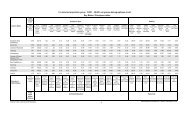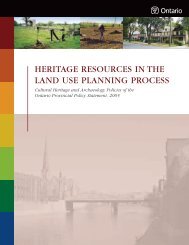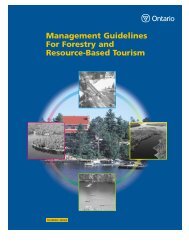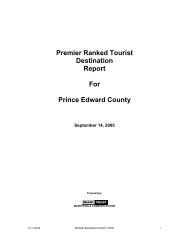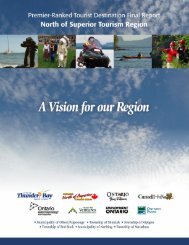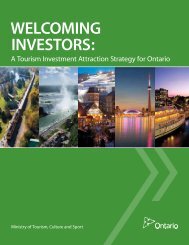Factors Influencing Visitor's Choices of Urban Destinations in North ...
Factors Influencing Visitor's Choices of Urban Destinations in North ...
Factors Influencing Visitor's Choices of Urban Destinations in North ...
You also want an ePaper? Increase the reach of your titles
YUMPU automatically turns print PDFs into web optimized ePapers that Google loves.
“Tourism, Competitiveness, and Societal Prosperity and the CompetitiveDest<strong>in</strong>ation: A Susta<strong>in</strong>ability Perspective”Ritchie and Crouch (1999 and 2000) made a significant contribution to the literature onthis topic by provid<strong>in</strong>g the most detailed model <strong>of</strong> the dest<strong>in</strong>ation competitiveness. Thismodel was first developed <strong>in</strong> 1993, but was modified over the years. In 2000, Ritchie andCrouch added another category to the model ‘Dest<strong>in</strong>ation Policy, Plann<strong>in</strong>g andDevelopment’. They felt that it was necessary to emphasize tourism policy as a separatemajor element <strong>in</strong> the model and to <strong>in</strong>clude it <strong>in</strong> this new category. They stressed theimportance <strong>of</strong> this category, s<strong>in</strong>ce the objective <strong>of</strong> tourism policy is to create anenvironment where “tourism can flourish <strong>in</strong> an adaptive susta<strong>in</strong>able manner.” Thecategory “Dest<strong>in</strong>ation Management” <strong>in</strong> the earlier model did not <strong>in</strong>corporate issuesrelated to the tourism policy.Ritchie and Crouch model (2000) <strong>in</strong>cludes the follow<strong>in</strong>g components: Core Resourcesand Attractors; Support<strong>in</strong>g <strong>Factors</strong> and Resources; Dest<strong>in</strong>ation Management; Dest<strong>in</strong>ationPolicy, Plann<strong>in</strong>g and Development; Qualify<strong>in</strong>g and Amplify<strong>in</strong>g Determ<strong>in</strong>ants; andCompetitive Micro and Macro Environment.1. Core Resources and Attractors represent factors that have appeal to tourists. Inparticular, the authors highlight physiography <strong>of</strong> dest<strong>in</strong>ation, culture and history,market ties, mix <strong>of</strong> activities, special events, enterta<strong>in</strong>ment, and <strong>in</strong>frastructure.2. Support<strong>in</strong>g <strong>Factors</strong> and Resources provide the necessary foundations for a strongtourism sector. These resources <strong>in</strong>clude <strong>in</strong>frastructure, accessibility, facilitat<strong>in</strong>gresources, hospitality, and enterprise.3. Dest<strong>in</strong>ation Management <strong>in</strong>cludes the resources that shape and <strong>in</strong>fluence adest<strong>in</strong>ation’s competitive strength. The focus here is on resources stewardship,market<strong>in</strong>g, f<strong>in</strong>ance, venture capital, quality <strong>of</strong> service, and visitor management.4. Dest<strong>in</strong>ation Policy, Plann<strong>in</strong>g, and Development—the new category <strong>in</strong> the model—describes the process that seeks to create an environment with<strong>in</strong> which “tourism canflourish <strong>in</strong> an adaptive manner.” Some <strong>of</strong> the factors <strong>in</strong>clude development,monitor<strong>in</strong>g and evaluation, audit, and philosophy.5. Qualify<strong>in</strong>g and Amplify<strong>in</strong>g Determ<strong>in</strong>ants are constra<strong>in</strong>ts that <strong>in</strong>fluence a dest<strong>in</strong>ation’scompetitive potential. These constra<strong>in</strong>ts are location, <strong>in</strong>terdependencies,safety/security, and awareness/image.6. Competitive Micro Environment comprises the most important stakeholders such asmembers <strong>of</strong> the travel trade, citizen groups, media, f<strong>in</strong>ancial <strong>in</strong>stitutions, governmentdepartments, etc. As components <strong>of</strong> the tourism system, these stakeholders shape theimmediate environment with<strong>in</strong> which the dest<strong>in</strong>ations must compete.7. Competitive Macro Environment tourism dest<strong>in</strong>ation is <strong>in</strong>fluenced by a globalenvironment and global forces such as economic restructur<strong>in</strong>g, concern forenvironment, shift<strong>in</strong>g demographics, spread <strong>of</strong> democracy, etc. The dest<strong>in</strong>ation needsto adapt to these global forces to successfully compete with other dest<strong>in</strong>ations.Criticism 24 : This is once aga<strong>in</strong> a l<strong>in</strong>ear, sequential model with no effort to describepotential <strong>in</strong>teractions between different components <strong>of</strong> the model.24 Po<strong>in</strong>ted out by Dwyer and Kim (2001).46


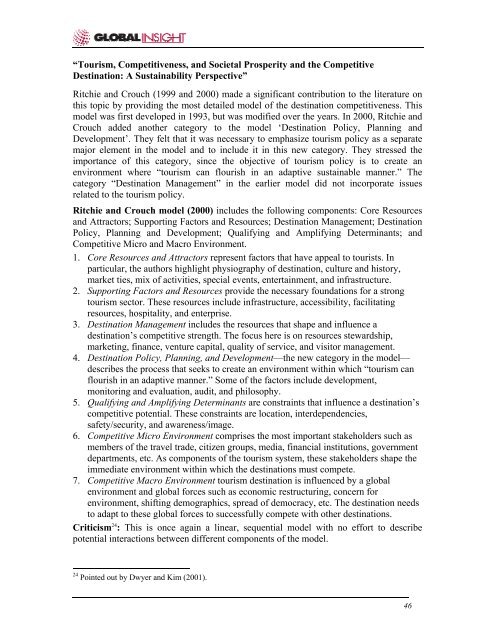
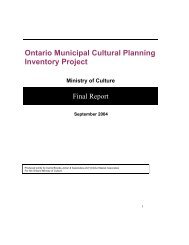
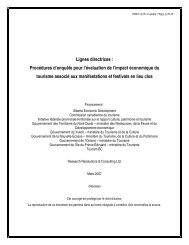
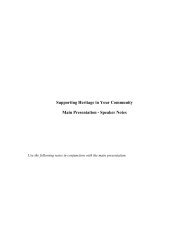
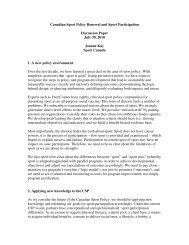
![THIS AGREEMENT made this [date], between [name of owner] (the ...](https://img.yumpu.com/49827605/1/158x260/this-agreement-made-this-date-between-name-of-owner-the-.jpg?quality=85)

